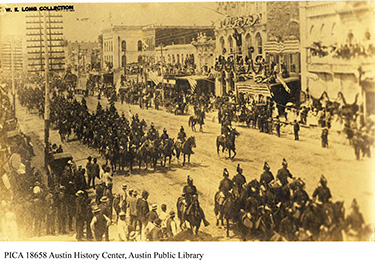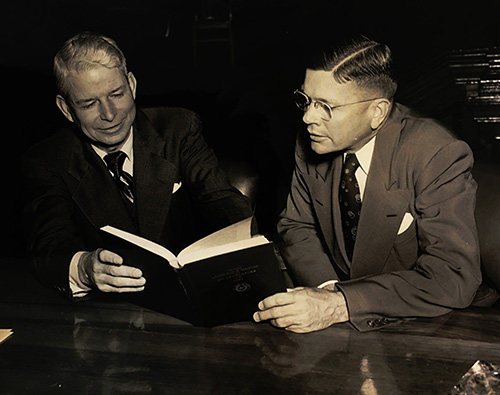
Next week will mark the 130th anniversary since the State of Texas dedicated our current Capitol building. From May 14–19, 1888, more than 20,000 people came from all over the state to participate in festivities such as drill team competitions, military displays, band concerts, and fireworks. The events culminated with the official dedication on May 16, when
Sen. Temple Houston (the youngest son of
Sam Houston) accepted the building on the state's behalf.
The
Constitution of 1876—which is still our constitution today—made financial provision for the new building in
Article XVI, Sec. 57, authorizing the use of 3 million acres of public land in the Texas Panhandle to pay for the new capitol and calling on the Legislature to pass the necessary bills to begin the project. (That land would become
XIT Ranch.)
In 1879, the 16th Legislature passed
SB 21, 16R, "Relating to providing for designating, surveying and sale of three million and fifty thousand acres of the unappropriated public domain for the erection of a new state capitol and other necessary public buildings at the seat of government, and to providing a fund to pay for surveying said lands" and
SB 153, 16R, "Relating to providing for building a new state capitol."
On May 2, 1888,
HB 38, 20(1) was approved, "an Act to provide for the reception of the new State Capitol Building." They accepted the Capitol—contingent on the completion of all remaining work—and on
May 10, authorized the moving of furniture from the temporary Capitol to the new one. Most offices were established in their new spaces by May 11, and the Legislature convened in its new chambers for the first time.

After the dedication, the work continued: in 1889, committees were formed to investigate the
cost of running a capitol elevator, the
acoustics of the House chamber, and
Capitol grounds considerations like placing "a neat and substantial iron fence around said grounds" and "the cost of properly wiring the Capitol building, with all necessary fixtures, with the view of placing electric lights in said building." Fortunately, they did not use all of the money from the sale of the XIT land to construct the building, so they had some funding left over to address these and other budgetary needs—allocating that money was the reason for the
20th Legislature's special session in April–May 1888.
The work continues today—since 1853, more than 40 committees have been charged with
Capitol-related topics. Modernizing the building, repairing after 1983 fire damage, and maintaining the grounds has kept the Legislature (and of course, the State Preservation Board) busy over the years. But, Sen. Houston said it well:
It would seem that here glitters a structure that shall stand as a sentinel of eternity, to gaze upon passing ages, and, surviving, shall mourn as each separate star expires. ~Sen. Temple Houston, Capitol Dedication Speech, May 16, 1888
See the Handbook of Texas' entry on the Capitol to learn more about the process of designing and constructing the building. 




